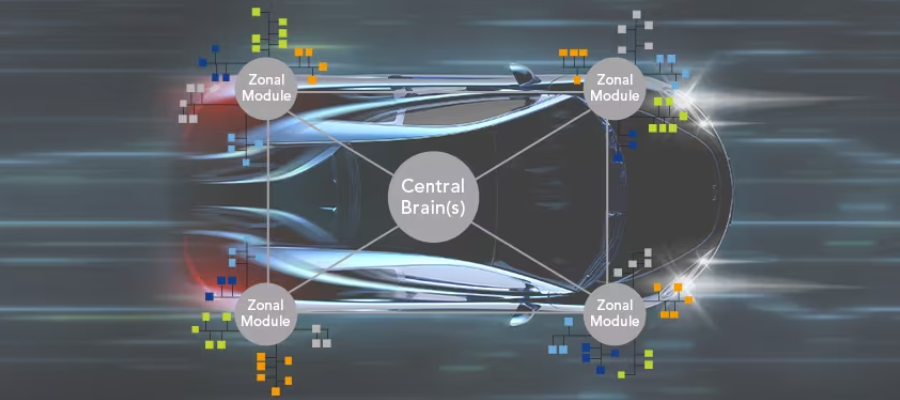
Zonal architecture in automotive design is transforming the way vehicle electronics and computational systems are organized. Instead of the traditional approach, where each vehicle function—such as braking, infotainment, or climate control—has its own dedicated electronic control unit (ECU), zonal architecture consolidates multiple ECUs into fewer, more powerful units. Each zone within the vehicle manages a range of functions specific to that area, streamlining the wiring system and reducing complexity, weight, and cost. This new approach not only simplifies the vehicle’s electronic systems but also enhances reliability and efficiency.
Centralized compute takes this concept further by consolidating the vehicle’s computational power into one or a few central processing units (CPUs), rather than distributing tasks across many smaller ECUs. This central unit oversees a broad array of vehicle functions, from driver assistance systems to infotainment and connectivity. Centralized computing is critical for real-time data processing and decision-making, which are essential for advanced features like autonomous driving. By centralizing processing power, automakers can simplify software updates, improve data security, and integrate new functionalities more seamlessly.
As the automotive industry progresses towards software-defined vehicles, zonal architectures and centralized computing systems are becoming increasingly prominent. These architectures are essential for enabling future innovations such as fully autonomous driving and vehicle-to-everything (V2X) communication. By adopting zonal and centralized systems, automakers can enhance performance, flexibility, and security, paving the way for a more software-centric automotive future.


